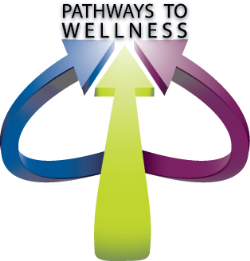Social Determinants of Health

"Our zip code may be more important than our genetic code"(1)
What are the social determinants of health?
The social determinants of health are the conditions, in which children, youth, and families are born, grow up, live and work, as well as the quality and accessibility to health care (Shern, Steverman, Ahmed, & Shea, 2011). Where you live can be a significant indicator of how well you live as well as how long you live. Such non-medical factors influence health and wellbeing, including health-related knowledge, attitudes, beliefs, or behaviors.(2) Socioeconomic inequalities in health have been widening for decades. In the United States the data consistently show that people living in poverty, and particularly those who are minorities, bear a disproportionate burden of exposure to unhealthy environments and are at greater risk for mental and behavioral health-related conditions.3 In addition to health literacy, gender, education, sexual orientation and geography; culture, acculturation, language, race, ethnicity, socioeconomic status, and social exclusion significantly influence overall health status as well.4 These factors tend to be interrelated and contribute to disparities among, as well as within, groups.
Why address the social determinants of health?
Creating a framework that incorporates the social determinants of health can provide a more complete picture of why people become ill initially, and, moreover, what it will take to restore their health. It recognizes the value of equity and social justice as essential to staying healthy and accessing quality health care. Policy changes to alleviate the social determinants of health, such as poverty, racism, violence and access to resources, can have a far reaching impact on improving the health of a community, state or county. Addressing only the symptoms of illness and ignoring its root cause will not improve population health.
Language of Social Determinants |
|
| Health | a state of complete physical, mental, and social well-being and not just the absence of illness |
| Social Exclusion | a multidimensional process of progressive social rupture, detaching groups and individuals from social relations and institutions and preventing them from full participation in the normal, normatively prescribed activities of the society in which they live |
| Oppression | the exercise of authority or power in a burdensome, cruel, or unjust manner |
| Acculturation | cultural modification by an individual, group or community by adapting to or borrowing traits from another culture |
| Social Gradient | the extent of the difference in wealth and opportunity between those with the most and those with the least |
| Structural Racism | the differential access to the goods, services, and opportunities of society. Generally, there is no sole, true identifiable perpetrator; when racism is built into the institution, it appears as the collective action of the population |
| Social Capital | the fabric of a community and the community pool of human resources available |
| Income Inequality | unequal distribution of household or individual income across the various participants in an economy |
| Health Inequity | a difference or disparity in health outcomes that is systematic, avoidable, and unjust |
| Health Disparities | differences in health outcomes between groups that reflect social inequalities |
| Health Literacy | whether a person can obtain, process, and understand basic health information and services that are needed to make appropriate health decisions; also requires complex group of reading, listening, analytical, and decision-making skills |
Key Messages for Everyone
- Social determinants of health are the primary determinants regarding whether individuals stay healthy or become ill
- The larger the gap in health disparities, the more the overall health status of entire populations is reduced
- The larger the difference in health status between the healthiest and least healthy in a community the lower the overall health status of the population
- Assess the community with the community using a community-based participatory approach (community engagement)
- Significant health inequalities persist among and within minority groups
- Equity & social justice are the cornerstones of health
Sources
(1) Robert Wood Johnson Foundation. http://www.rwjf.org/vulnerablepopulations/product.jsp?id=42029
(2) WHO (2010). Social determinants of health. Retrieved from http://www.who.int/social_determinants/en/
(3) Evans, G., & Kantrowitz, E. (2002). Socioeconomic status and health: The potential role of environmental risk exposure. Annual Review of Public Health, 23, 303-31.
(4) Situational Analysis: Issues of Relevance in Designing a National Strategy to Promote Mental, Emotional, and Behavioral Health and to Prevent/Reduce Mental Illness and Substance Use Disorders. D. Shern, S. Steverman, E. Ahmed, & P. Shea. National Association of State Mental Health Program Directors, 2011. Page 6.

